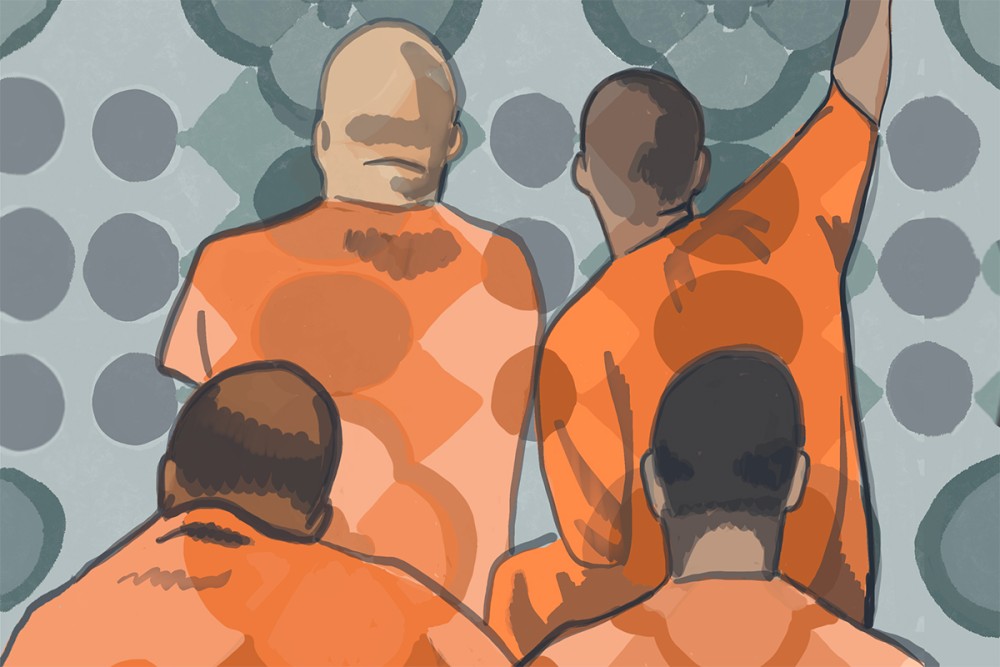Restorative justice with Anselm
The satisfaction theory of atonement offers my incarcerated students something the substitution theory does not: a way to make amends and be restored.

Ispend every friday morning in prison. I’m not incarcerated, but at 8 a.m. each Friday I flash my ID, sign in at the guard post outside East Moline Correctional Center, pass through the fence topped with barbed wire and razor wire, weave through the labyrinth that is the administration building, cross the yard strewn with exercise equipment and old-fashioned pay phones, and arrive at a classroom inside the education building. There I’ll spend the next two hours teaching 12 incarcerated men how to read scholarly articles, write strong academic essays, and manage their time now that they’re in their first semester of college. When my time is up, I repeat the process in reverse, hungry both for lunch and for next Friday to come so I can do it all again.
Prison education programs are a type of restorative justice. They aim to heal the relationship between an incarcerated person and their community. More than two-thirds of former prisoners are rearrested within three years of being released, but the recidivism rate drops dramatically for those who earn degrees through prison education programs: only 14 percent of prisoners who earn an associate’s degree are rearrested, 6 percent of those who earn a bachelor’s degree, and zero percent of those who earn a master’s. These numbers reflect what graduates of prison education programs across the country will tell you: that education is one of the best tools to ease reentry and therefore heal the bonds between the formerly incarcerated individual and their community. Education is also restorative justice in the sense that it attempts to heal the failure of the community to respond adequately to the humanity of incarcerated people before, during, and after incarceration.
The Augustana Prison Education Program allows incarcerated men at EMCC to earn a four-year BA degree by taking classes taught in prison by instructors like me. I’m also a seminarian, one of a few MA students in a sea of MDivs at my school. I’ve come to think of my role as an instructor as a type of ministry. When my classmates speak about their congregations, I think of my students. When they think of preaching, I think of teaching. When a professor asks how we would preach this bit of scripture or theology to our congregations, I consider how I would talk about it in class.




